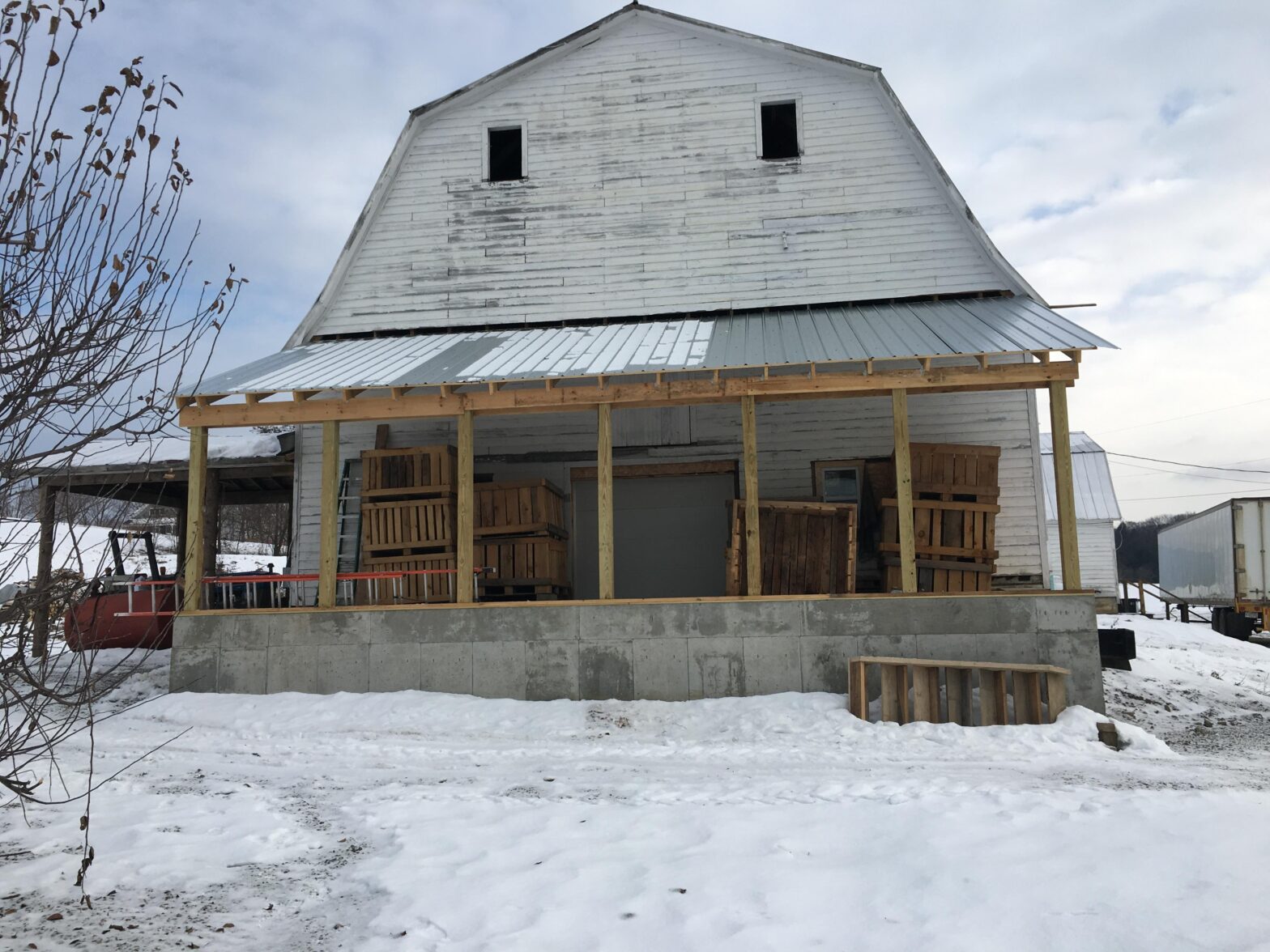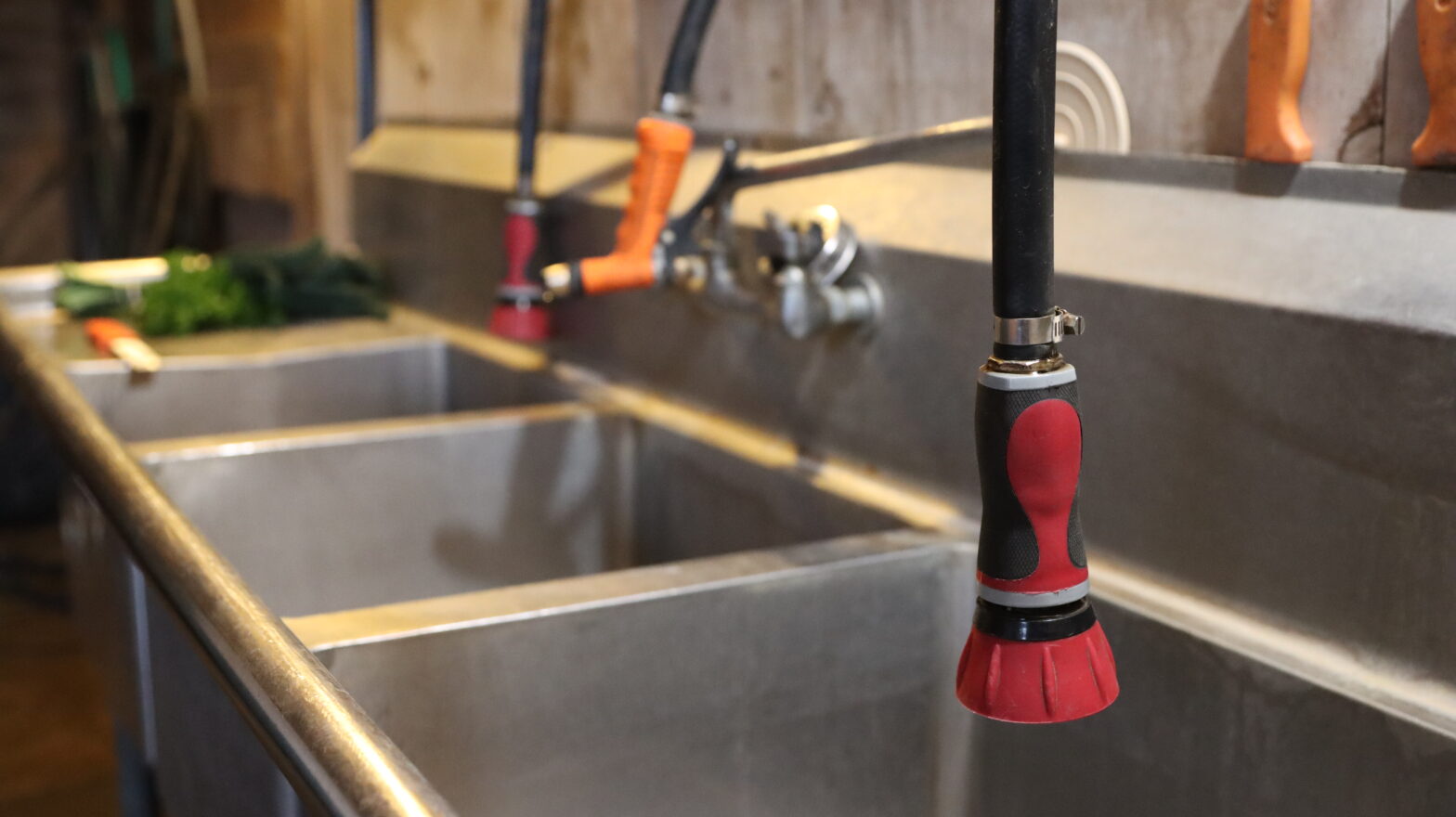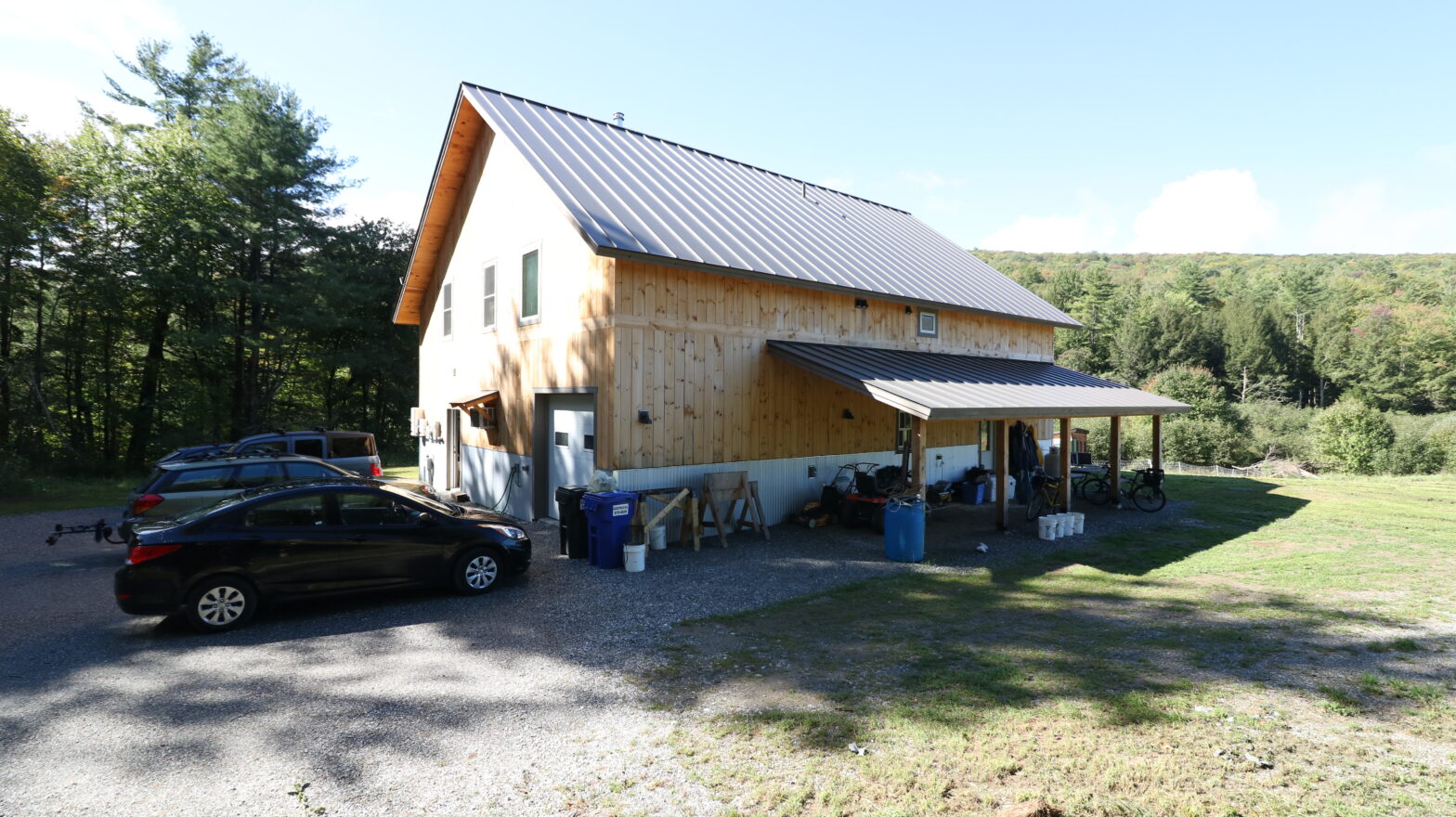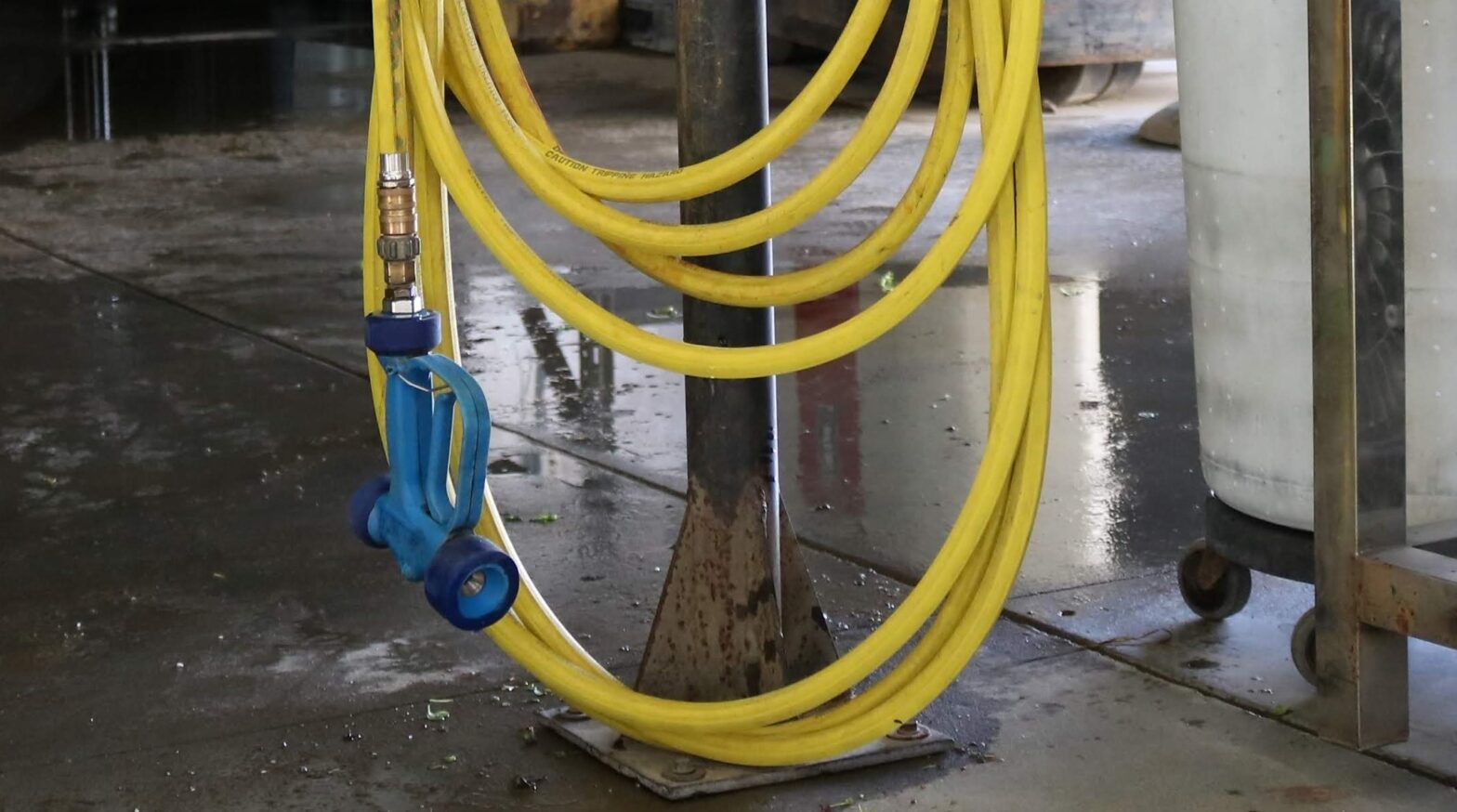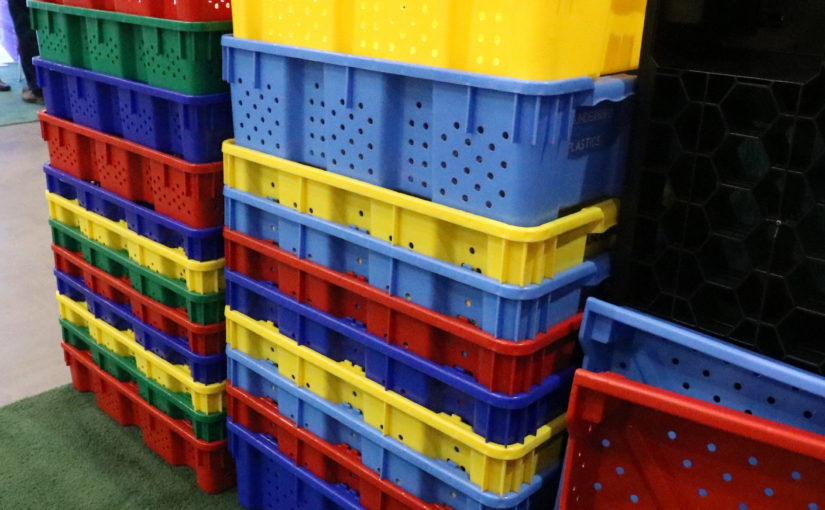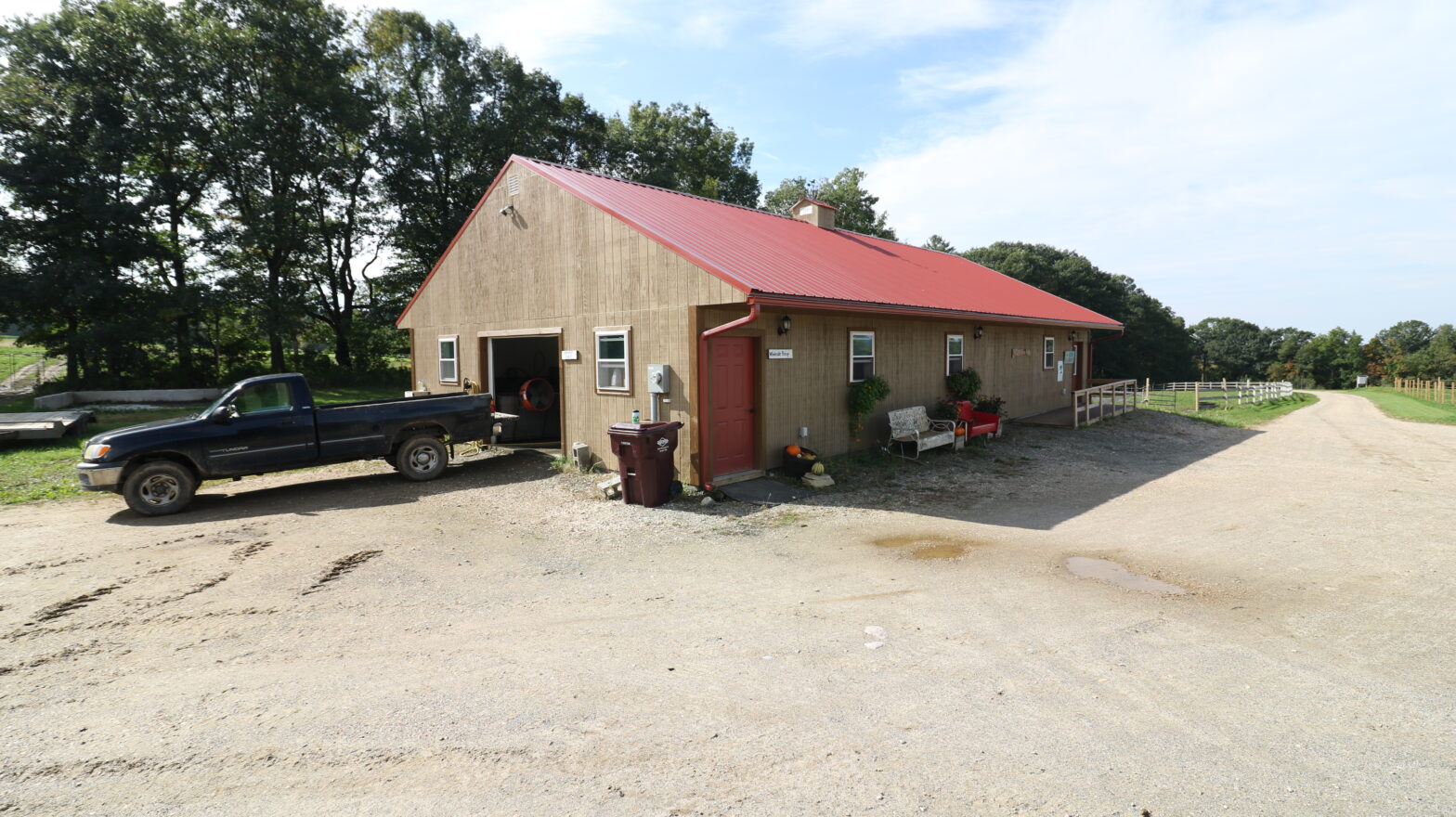The intentional, directional, and reliable flow of water is important to ensure agricultural water is “safe and of adequate sanitary quality”. This post provides information on the importance of backflow prevention and some common practices that help mitigate the risk of backflow. You can also view presentation slides and a recorded webinar on this topic …
Category Archives: Washing and Packing
Last Resort Farm Not Stalled by Dairy Barn Conversion
A PDF of this case study is available for download here. Silas Doyle-Burr is managing Last Resort Farm in Monkton, VT, taking over the operations from his parents on the farm he grew up at. The farm was purchased in 1987 and transitioned from dairy farming to vegetable production in 1993. They now grow 26 …
Continue reading “Last Resort Farm Not Stalled by Dairy Barn Conversion”
Vegetable Wash Sinks, Tanks, Tubs and Basins: Upgrades for Efficiency and Ergonomics
A pdf of this blog post can be downloaded here. Produce wash sinks and tanks on vegetable farms consist of several different styles, designs, sizes, and uses. The needs vary from farm to farm but some features to consider are highlighted here. Some common basins for washing vegetables could include the following. Commonly Used as …
Last Resort Farm: Post Harvest Case Study (Video Series)
Silas Doyle-Burr is managing Last Resort Farm in Monkton, VT, taking over the operations from his parents on the farm he grew up at. The farm was purchased in 1987, and transitioned from dairy farming to vegetable production in 1993, and now grow 26 different crops split just about evenly retail vs. wholesale. The following …
Continue reading “Last Resort Farm: Post Harvest Case Study (Video Series)”
Mighty Clean and Comfortable (Video Series)
Lisa MacDougall has led Mighty Food Farm through start-up, relocation from rented land to owned land, and now through the construction of a brand-new 60 ft x 90 ft wash and pack shed. She’s done this all while producing a diverse mix of organic vegetables, tree fruit and berries on fourteen acres, now, in Shaftsbury. …
Continue reading “Mighty Clean and Comfortable (Video Series)”
The BarnHouse: Optimized for Modern Day Vegetable Farming at Footprint Farm
Download the PDF Fact Sheet of this Post Harvest Case Study Here! Taylor and Jake Mendel own and operate Footprint Farm in Starksboro, VT. Starting their own farm in 2013, they now produce pretty much everything except storage potatoes and storage squash with 66 different kinds of vegetables grown in both fields and high-tunnels. About …
Continue reading “The BarnHouse: Optimized for Modern Day Vegetable Farming at Footprint Farm”
Footprint Farm: Post Harvest Case Study – Video Series
Looking to upgrade your wash-pack space? Check out this interview with Taylor Hutchison from Footprint Farm talking about their motivations for building a new barn (house!) and including all the features they implemented to make it food safe and efficient. Stay tuned for a written case study, and a downloadable pdf coming soon. The playlist …
Continue reading “Footprint Farm: Post Harvest Case Study – Video Series”
Hanging Hoses
Having water when and where you need it can make a big difference in vegetable wash station efficiency. Planning for multiple “drops” or spigots around the wash area can make it more convenient to access water where it is needed. Investing in a hose hanger, hose reel or a trolley can help keep the hose …
Bins, Buckets, Baskets & Totes
So you’re starting to farm, or scaling up your production. You hear talk about produce safety and cleanability. You are checking out what other farms are doing and are looking for harvest crates and storage bins. You probably noticed lots of people use many different things. Some use 5-gallon pails, milk crates, muck buckets, some …
Mighty Clean and Comfortable – A New Wash and Pack Shed at Mighty Food Farm
Download this Postharvest Case Study as a PDF Here! Lisa MacDougall has led Mighty Food Farm through start-up, relocation from rented land to owned land, and now through the construction of a brand-new 60 ft x 90 ft wash and pack shed. She’s done this all while producing a diverse mix of organic vegetables, tree …
Continue reading “Mighty Clean and Comfortable – A New Wash and Pack Shed at Mighty Food Farm”
